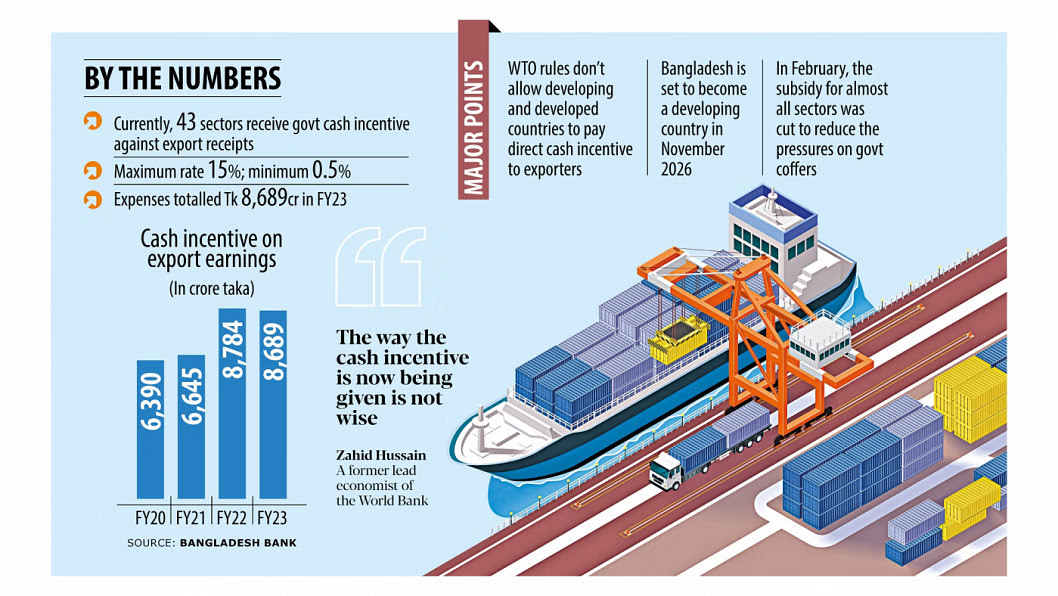The report says fast fashion can be 80% circular by scaling textile recycling
Fashion can become 80% circular through pre-competitive collaboration to scale textile recycling technologies which will also create new jobs and value for investors, said a research report.
Global Fashion Agenda (GFA), the leading non-profit organization for industry collaboration on sustainability in fashion, has published the research report titled “Scaling Circularity” from Denmark through a virtual program on November 22 in the aftermath of COP26.
The report also revealed that if barriers to scale can be overcome, the recycling of textiles could create a profit pool worth $10-20 billion by 2030.
The Circular Fashion Partnership (CFP), a cross-sectoral project, led by the Global Fashion Agenda with Reverse Resources and the Bangladesh Garment Manufacturers and Exporters Association (BGMEA), with the support of Partnership for Growth (P4G), conducted a case study action on Bangladesh on circular fashion.
The report has demonstrated how stakeholders in the industry in Bangladesh can work together to overcome barriers to scaling nascent recycling markets.
Federica Marchionni, CEO of Global Fashion Agenda, said that this research proves that the necessary recycling technologies exist and can deliver huge improvements in environmental impact.
“The challenge is providing conditions for scaling and with sufficient investment, supportive policies, and by enabling pre-competitive collaborations, I am optimistic that we can create a profitable circular system and accelerate fashion’s journey to net zero,” she added.
Karl-Hendrik Magnus, senior partner and the leader of the Apparel, Fashion & Luxury Group, McKinsey & Company, said that the textile recycling must be rapidly scaled to help the fashion industry remain on a 1.5°C pathway.
“This report emphasizes the often-overlooked opportunity for textile recycling in post-industrial waste. It highlights the power of industry stakeholders working together to accelerate change,” he added.
He also said that the Circular Fashion Partnership is proof of the power of pre-competitive collaboration, and its model for impact should be replicated and scaled.”
The report also revealed that scaling textile recycling could build a $4.5 billion market opportunity in six major manufacturing countries– Vietnam, Turkey, India, Malaysia, Indonesia, and Bangladesh.
McKinsey & Company, GFA’s strategic knowledge partner, concluded that the fashion industry could become 80% circular by 2030 if there is increased investment in the existing recycling technologies and infrastructures.
The CFP brought together brands, manufacturers, and recyclers to reduce dependency on virgin materials by establishing a long-term, scalable transition to a circular fashion system in the RMG sector in Bangladesh.
The partnership builds supportive ecosystems through the Reverse Resources platform that enables capturing and recycling of post-industrial textile waste streams into valuable resources.
The report presented the global demand for recycled materials and improved access to consistent, high-quality, transparently traced feedstock, in order to attract investment and scale the post-industrial recycling sector, starting with Bangladesh.
From November 2020 until November 2021, the CFP has mapped and traced 1013 tons of textile waste on the Reverse Resources platform (0.2% of waste in Bangladesh), now regularly tracing over 200 tons a month.
The project has achieved significant results despite multiple Covid-19 lockdowns.
CFP provided guidance for Bangladesh to design pre-competitive collaborations in other regions or parts of the value chain which included multi-stakeholder engagement, particularly with policymakers.
It also recommended delivering transparency, traceability, and tracking on material flow, on the ground coordination, with deep engagement with the existing local economy.
The report suggested presenting an aligned industry voice on the demand for recycling capacity by brands, and the implied business opportunity for the local economy in scaling recycling capabilities in Bangladesh.
The report also said that the clothing and textile industry accounts for 4% of global CO2eq (equivalent) emissions, 20% of wastewater, and 70% of fashion’s GHG emissions.
The report modeled the potential for scaling textile recycling across the full value chain in 2035 based on existing technologies.
This analysis suggests current technologies have the potential to deliver 75% textile-to-textile recycling into the fashion system, and a further 5% recycled feedstock from other industries.
To make this a reality, the industry requires at least $5-7 billion capital investment in recycling technologies by 2026, as well as further mobilization of capital towards the collection and sorting infrastructure.
















